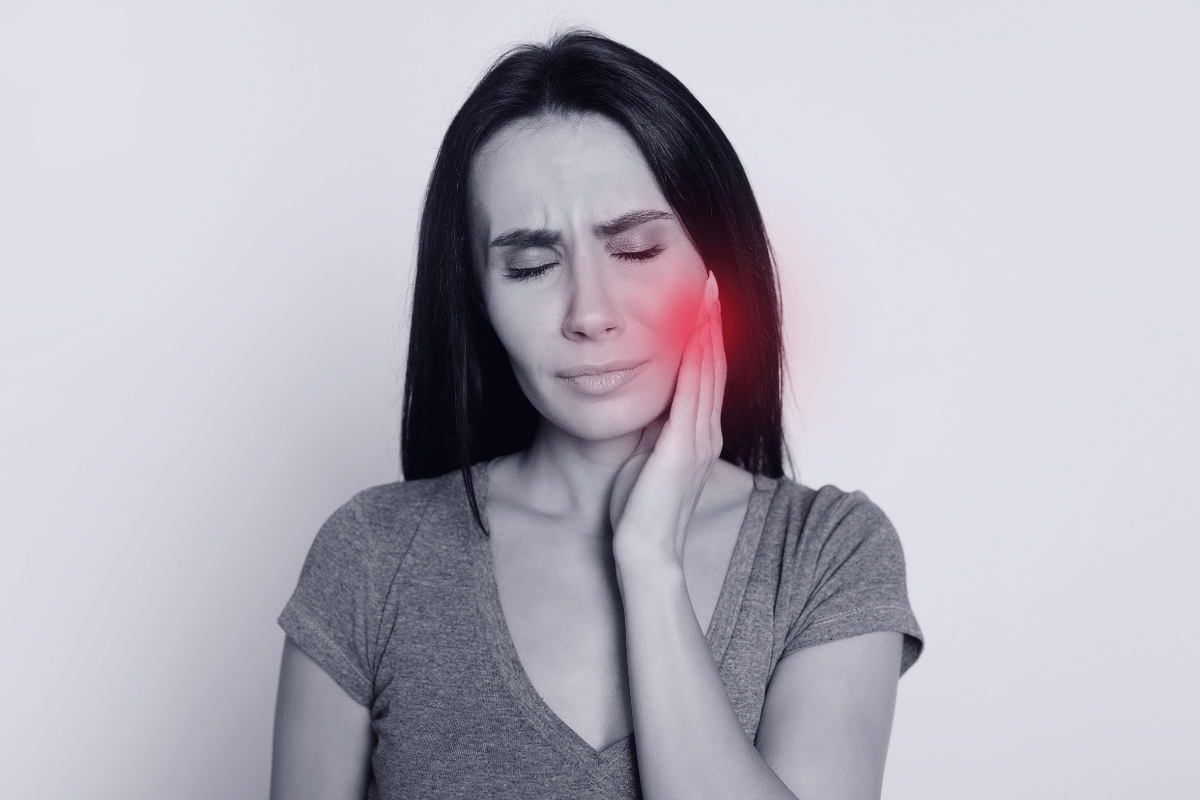
The rising incidence of dental problems is a quiet but noteworthy concern in the Australian Health Conditions. As our daily lives evolve and embrace modernity, so do the challenges to our oral health.
This article aims to shed light on common dental problems in Australia and analyze the factors that have led to an increase in these issues. being the prominent player in Australian Dental Treatment, we believe that understanding these challenges is the first step toward fostering a healthier and more vibrant smile.
So, let’s get started.
Common Causes of Dental Problems in Australia
The increasing prevalence of dental problems across the nation underscores a multifaceted concern that extends beyond mere statistics. Lifestyle changes, dietary habits, and a population that is, on average, aging are contributing factors to the growing dental issues Australians face.
Let’s quickly understand them.
Dietary Changes
Adopting modern, processed foods has led to an increased consumption of sugars and acids, contributing to the erosion of tooth enamel and the development of cavities.
Irregular Dental Check-ups
Infrequent visits to the dentist prevent early detection and intervention, allowing dental issues to progress unchecked, leading to more severe problems.
Aging Population
As Australia's population ages, individuals face specific challenges related to oral health, including an increasing risk of tooth decay, gum disease, and tooth loss.
Lack of Awareness
Still today, A portion of the population may not be adequately informed about the importance of regular dental check-ups, proper oral hygiene practices, and the impact of lifestyle choices on dental well-being.
Tobacco and Alcohol Consumption
The use of tobacco and excessive alcohol consumption are significant contributors to oral health issues, including gum disease and an increased risk of oral cancer.
Poor Oral Hygiene Habits
Inconsistent or inadequate oral hygiene practices, such as irregular brushing and flossing, contribute to plaque buildup and increase the risk of various dental problems.
Stressful Life
Stressful lifestyles can lead to bruxism, the involuntary grinding or clenching of teeth, causing wear and tear, headaches, and jaw pain.
Genetic Factors
Genetic predispositions can influence the susceptibility to certain dental issues, such as gum disease and malocclusion, impacting overall oral health.
10 Dental Problems in Australian Lifestyle
Understanding the nuances of common dental problems, recognizing their symptoms, and seeking appropriate treatment is essential for maintaining optimal oral health. So, in this section, let’s check out the 10 most frequent dental issues Australian people find in their life and their symptoms and proposed treatments.
1. Tooth Sensitivity
Tooth sensitivity occurs when the underlying dentin becomes exposed, leading to discomfort or pain when teeth encounter hot, cold, sweet, or acidic stimuli. This exposure can result from factors like enamel erosion or gum recession.
What are the Symptoms of Tooth Sensitivity?
- Sharp pain or discomfort with specific triggers.
What is the Proposed Treatment for Tooth Sensitivity?
Desensitizing toothpaste, fluoride treatments to strengthen enamel, and dental bonding or veneers in severe cases.
2. Tooth Decay (Cavities)
Tooth decay, commonly known as cavities, results from the gradual breakdown of tooth enamel due to the acids produced by bacteria. This process creates small holes or cavities in the teeth, compromising their structural integrity.
What are the Symptoms of Tooth Decay?
- Sensitivity to hot or cold temperatures.
- Pain or discomfort while chewing.
- Visible holes or pits in the teeth.
What is the Proposed Treatment for Tooth Sensitivity?
Dental fillings to restore the affected areas, crowns for more extensive damage, and in severe cases, root canal therapy.
3. Cracked or Chipped Teeth
Cracked or chipped teeth result from physical trauma, biting on hard objects, or underlying weaknesses in tooth structure. The severity can range from minor chips to more extensive cracks, impacting the tooth's function and aesthetics.
What are the Symptoms of Tooth Decay?
- Pain when biting or chewing.
- Sensitivity to temperature changes.
What is the Proposed Treatment for Tooth Sensitivity?
Dental bonding for minor chips, veneers or crowns for more extensive damage and extraction in severe cases.
4. Malocclusion (Misaligned Teeth)
Malocclusion refers to misaligned teeth that affect the bite and overall oral health. This can include conditions like crowding, spacing, or a misaligned jaw, leading to functional and aesthetic concerns.
What are the Symptoms of Malocclusion?
- Difficulty in cleaning teeth.
- Speech issues.
- Jaw pain.
What is the Proposed Treatment for Malocclusion?
Orthodontic treatments such as braces or clear aligners, and sometimes dental appliances.
5. Wisdom Teeth Pain
Wisdom teeth, or third molars, can cause pain and discomfort as they emerge, often leading to issues like impaction, crowding, or improper alignment. Wisdom teeth pain is a common concern during their eruption.
What are the Symptoms of Wisdom Teeth Pain?
- Jaw pain or soreness.
- Swelling and tenderness in the back of the mouth.
- Difficulty opening the mouth.
Also Read: Symptoms Indicating Wisdom Teeth Infection
What is the Proposed Treatment for Wisdom Teeth Pain?
Pain management through over-the-counter or prescribed medications, warm saltwater rinses, and in severe cases, extraction of problematic wisdom teeth.
6. Gum Disease (Gingivitis and Periodontitis)
Gum disease encompasses a spectrum of conditions, from mild gingivitis characterized by inflamed gums to severe periodontitis involving damage to the supporting structures of the teeth. The accumulation of plaque and tartar primarily causes it.
What are the Symptoms of Gum Disease?
- Swollen and red gums.
- Bleeding during brushing or flossing.
- Persistent bad breath.
What is the Proposed Treatment for Gum Disease?
Professional dental cleaning to remove plaque and tartar, scaling and root planing for deep cleaning, and antibiotic therapy for advanced cases.
7. Bruxism (Teeth Grinding)
Bruxism involves the involuntary grinding or clenching of teeth, often during sleep. This habitual behavior can lead to wear and tear on the teeth, causing various dental issues.
What are the Symptoms of Bruxism?
- Headaches.
- Jaw pain.
- Worn-down teeth.
What is the Proposed Treatment for Bruxism?
Night guards to protect teeth, stress management techniques, and addressing underlying causes.
8. Dry Mouth (Xerostomia)
Xerostomia, or dry mouth, occurs when there is insufficient saliva production. This condition can result from various factors, including medications, certain medical conditions, or lifestyle choices.
What are the Symptoms of XeroStomia?
- Difficulty in swallowing.
- Bad breath.
- Frequent thirst.
What is the Proposed Treatment for Xerostomia?
Hydration, saliva substitutes, addressing underlying causes such as medication side effects.
9. Bad Breath (Halitosis)
Bad breath, or halitosis, is a condition characterized by unpleasant odors emanating from the mouth. It can result from various factors, including poor oral hygiene, gum disease, and certain medical conditions.
What are the Symptoms of Halitosis?
- Persistent unpleasant breath.
- Dry mouth.
- Unpleasant taste in the mouth.
What is the Proposed Treatment for Halitosis?
Improving oral hygiene practices, regular dental cleanings, addressing underlying causes such as gum disease or dry mouth, and using antibacterial mouthwashes.
10. Tooth Discoloration
Tooth discoloration refers to changes in the natural color of the teeth, manifesting as stains or darkening. It can be caused by factors like aging, certain foods and beverages, tobacco use, or dental trauma.
What are the Symptoms of Tooth Discoloration?
- Yellowing or darkening of teeth.
- Stains on the tooth surface.
- Altered tooth color compared to the natural shade.
What is the Proposed Treatment for Discolored Teeth?
Professional teeth whitening procedures, dental veneers, and addressing underlying causes through lifestyle changes.
Conclusion
Dental health is a cornerstone of overall well-being. It is crucial to acknowledge that timely intervention plays a key role in mitigating the impact of these issues. Whether it's addressing the discomfort of a wisdom teeth pain, the aesthetic concerns of tooth discoloration, or the persistent challenge of bad breath or any of the problem listed above or not even there, seeking professional guidance is the first step towards optimal oral health.
If you're in Australia and experiencing any of these common dental issues, don't hesitate. Visit your nearby Local dental clinic or schedule a consultation with our expert dentists. Your journey to a healthier and happier smile begins with a simple step. It's time to take charge of your oral health.


















